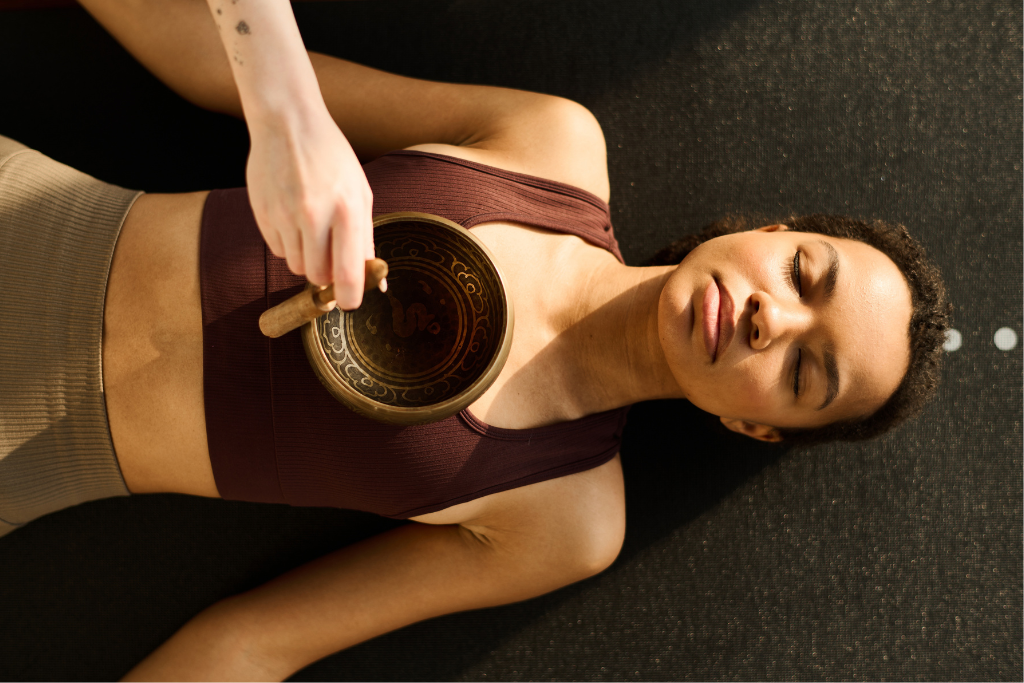Healing in the Digital Age: Navigating Energy Work Through Wearable & Biofeedback Tech

Holistic healing has always evolved with the times. From ancient sound rituals to traditional bodywork therapies, every culture has found ways to integrate new tools into timeless practices. Today, technology is the newest companion on that journey.
Wearables and biofeedback tools—such as heart rate variability (HRV) monitors, stress trackers, and smartwatches—are increasingly present in the wellness space. Rather than replacing intuition or spiritual practice, these devices can support healers in personalizing sessions, guiding clients with greater clarity, and validating progress that might otherwise feel invisible.
Used with intention, technology doesn’t disrupt the sacredness of energy work—it enhances it.
The Rise of Wearables in Holistic Wellness
Wearables like the Oura Ring, Fitbit, Apple Watch, and Garmin trackers continuously collect data about the body. For practitioners, this information can provide valuable insights into how clients respond to healing practices over time.
Examples of what wearable data can show:
- Sleep quality: Energy sessions may support deeper rest, reflected in improved sleep scores.
- Stress triggers: Identifying patterns before or after sessions to see how healing impacts resilience.
- Movement trends: Encouraging clients to notice how gentle practices like yoga or walking feel easier as their energy balances.
- Consistency markers: Data can remind clients to integrate breathwork, meditation, or mindful eating between sessions.
Wearables turn subtle shifts into visible evidence, bridging the gap between felt experience and measurable outcomes.
Biofeedback for Energy Awareness
Biofeedback takes tracking one step further, offering real-time feedback on how the body responds in the moment. Tools like HRV monitors, skin conductance sensors, and breathing trackers reveal how the autonomic nervous system reacts during stress or relaxation.
For energy workers, this creates opportunities to:
- Demonstrate impact: Clients can watch HRV improve during sound healing, Zenthai Shiatsu, or Tension & Trauma Releasing Exercises.
- Build trust: Seeing numbers shift alongside sensations reinforces belief in the process.
- Personalize care: Practitioners can adjust the flow of a session—slowing down, shifting modalities, or extending grounding practices—based on client response.
Want to bring these insights into virtual care? See How Online Booking Saves Time and Increases Efficiency for Healers to read on how an online booking system can save you time and enhance your holistic practice.
Integrating Tech Without Losing Connection
Technology is most effective when it complements—not overshadows—the healing process. Energy work is still about presence, intuition, and relationship. To maintain balance:
- Use devices briefly. Check data before or after a session, then set them aside.
- Share insights simply. Translate numbers into empowering language: “Your nervous system relaxed significantly here.”
- Stay grounded. Pause between reviewing data and engaging in healing to center yourself.
- Protect sacred space. Avoid allowing constant data collection to interfere with intuition, ritual, or client trust.
This approach ensures that wearables enhance your work rather than becoming the focus of it.
Tracking Client Progress Over Time
One of the most powerful applications of wearable and biofeedback tech is long-term tracking. Many clients describe subtle shifts—feeling calmer, sleeping better, or handling stress differently—but objective data validates those experiences.
For example:
- HRV trends: A gradual rise can reflect stronger resilience to stress over weeks of energy sessions.
- Sleep cycles: Better deep sleep after consistent meditation, Ayurveda-based evening rituals, or craniosacral therapy.
- Activity levels: Clients who once felt fatigued may notice step counts or daily movement naturally increasing.
When combined with session notes, practitioners gain a holistic picture of how mind, body, and energy evolve over time.
Healers can document these patterns with Client Notes, streamlining both professional records and client communication.
Modalities that Pair Well with Wearables
Not all practices lend themselves to tracking—but many do. Here are modalities that integrate beautifully with data-driven insights:
- Craniosacral Therapy: Clients often report deep relaxation; wearables may show slower heart rates or increased HRV during sessions.
- Ayurveda: Daily routines (dinacharya) like consistent meal timing or herbal supports can be tracked via digestive comfort journals alongside wearable data.
- Zenthai Shiatsu: A blend of movement, touch, and energy work. Wearables may capture shifts in stress recovery after treatments.
- Mindfulness-Based Stress Reduction (MBSR): Devices can validate improvements in focus, sleep, and relaxation linked to meditation practice.
- Sound Healing: Frequencies influence nervous system states, often showing immediate HRV improvements during sessions.
These modalities show the value of integrating intuition with information, blending ancient wisdom with modern awareness.
To learn more about modalities, see our overview of Holistic Healing Practices.
The Practitioner’s Perspective: Using Tech Mindfully
For practitioners, technology offers opportunities but also responsibilities. Here are some considerations:
- Ethics and privacy: Only use data your client consents to share. Keep information secure.
- Education: Be clear about what devices can—and can’t—measure. They don’t capture energy directly, but they reflect the body’s response.
- Customization: Each client may prefer different levels of tracking. Some love numbers; others prefer subtle reflection. Adapt to their needs.
- Integration with intuition: Use data as confirmation, not as the foundation. Your presence and awareness remain the core of healing.
This balance ensures that technology supports, rather than disrupts, the sacredness of healing work.
Creating At-Home Digital Healing Rituals
Clients can also use wearable data to deepen their self-care between sessions. With simple rituals, they can track how small choices affect digestion, mood, and sleep:
- Mindful walking: Track heart rate recovery after slow evening walks.
- Breath practices: Notice how HRV shifts with daily diaphragmatic breathing.
- Herbal tea rituals: Observe how chamomile or ginger tea influences sleep scores.
- Meditation consistency: Use reminders to build a routine and watch stress metrics improve over time.
- Digital detox resets: Pair screen-free evenings with wearable tracking to see how quickly rest improves.
For ideas on guiding clients, see How Can Heallist Get Me More Visibility to expand offerings like “Tech-Aware Energy Healing” or “Biofeedback-Based Meditation Coaching.”
Final Thoughts
Technology doesn’t replace the wisdom of the healer—it extends it when used mindfully. Wearables and biofeedback tools help practitioners demonstrate impact, personalize care, and empower clients with tangible progress markers.
When combined with heart-centered modalities mentioned above, these tools form a bridge between ancient practices and modern science.
Looking to refine your digital-age practice? Heallist provides tools to streamline sessions, record progress with client notes, and integrate online offerings with intention. Visit Heallist to align your healing work with the needs of today’s connected world.
FAQs
1. Do I need special training to use wearable or biofeedback tools with clients?
Not necessarily. Many wearables are user-friendly and come with built-in apps. For advanced tools like HRV monitors, some practitioners choose short training sessions to better interpret results.
2. Will technology distract from the healing experience?
It doesn’t have to. Use wearables briefly before or after sessions to provide insights. During the session itself, set them aside and focus on presence and intuition.
3. Can clients use their own wearables for tracking progress?
Yes. Many healers encourage clients to bring their own devices and track markers like sleep, HRV, or stress levels between sessions. This builds accountability and deepens self-awareness.
4. Are wearables and biofeedback tools suitable for all types of healing?
They can complement many modalities, from sound healing to Ayurveda and mindfulness practices. The key is using them to highlight shifts—not to define the entire experience.
5. How does tech-enhanced healing benefit long-term growth?
Progress often unfolds subtly. Data trends—like improved HRV, steadier sleep, or reduced stress triggers—help clients see how healing accumulates over time, validating the commitment to ongoing work.


